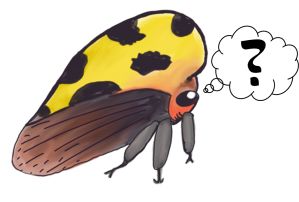Written by Nancy Miorelli
https://twitter.com/CharlesSimmins/status/544696298822443009
Well, in short. No. It’s actually a microscopic, parasitic zooplankton that attaches itself to the outside of other zooplankton.
Meet the crustacean Stygotantulus stocki, which measures in at just under 0.1mm (94µm).
What does that mean for scale? Well, an average human hair is about 75µm thick, so it’s slightly fatter than that.
But what is the smallest insect? That award (currently) goes to the male Dicopomorpha echmepterygis fairyfly (Mymaridae) [which is actually a wasp, not a fly]. This species lays its eggs in bark louse eggs [Psocoptera] and is only slightly bigger than S. stocki, measuring 0.139mm (139µm).
So this little critter is smaller than two human hairs put together.

The wingless male Dicopomorpha echmepterygis. The smallest known insect (Huber et al. 2013).
Interestingly, while the male Dicopomorpha echmepterygis is wingless, most fairyflies are so small (0.5-1.0mm) that they have little feathery structures for wings that help them float on air currents.
References:
1.) Morris S.C. (2006). A X , P. 2000. Multicellular Animals, Volume II. The Phylogenetic System of the Metazoa . xxiv 396 pp. Berlin, Heidelberg, New York: Springer-Verlag. Price Euros 229.00 ( VAT at local rate), SFr 387.50, £176.00, US $241.00 (hard covers). ISBN 3 540 67496 3 A X , P. 2003. Multicellular Animals, Volume III. Order in Nature – System Made by Man . xii 317 pp. Berlin, Heidelberg, New York: Springer-Verlag. Price Euros 179.95 ( VAT at local rate), SFr 304.50, £138.50, US $199.00 (hard covers). ISBN 3 540 00146 8, Geological Magazine, 143 (01) 141. DOI: http://dx.doi.org/10.1017/s0016756806271942
2.) Mockford E. (1997). A new species of Dicopomorpha (Hymenoptera: Mymaridae) with diminutive, apterous males., Ann. Ent. Soc. America, (90) 115-120. DOI:




Pingback: Why do entomologists kill insects? A non-taxonomist’s perspective. | Ask an Entomologist